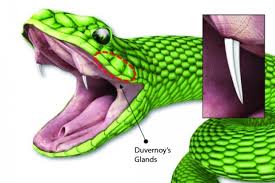
Breaking News
 First totally synthetic human brain model has been realized
First totally synthetic human brain model has been realized
 Trump's secret weapon is vanishing: Insiders reveal why young men who crowned him king are fleei
Trump's secret weapon is vanishing: Insiders reveal why young men who crowned him king are fleei
 Peter Schiff Goes Nuclear On Bitcoin, Saylor And CNBC
Peter Schiff Goes Nuclear On Bitcoin, Saylor And CNBC
 Actor Anthony Mackie: "We've Been Living Through Death Of American Male For Twenty Years
Actor Anthony Mackie: "We've Been Living Through Death Of American Male For Twenty Years
Top Tech News
 Mach-23 potato gun to shoot satellites into space
Mach-23 potato gun to shoot satellites into space
 Blue Origin Will Increase New Glenn Thrust 15-25% and Make Rocket Bigger
Blue Origin Will Increase New Glenn Thrust 15-25% and Make Rocket Bigger
 Pennsylvania Bill – 'Jetsons Act' – Aims To Green-Light Flying Cars
Pennsylvania Bill – 'Jetsons Act' – Aims To Green-Light Flying Cars
 New Gel Regrows Dental Enamel–Which Humans Cannot Do–and Could Revolutionize Tooth Care
New Gel Regrows Dental Enamel–Which Humans Cannot Do–and Could Revolutionize Tooth Care
 Researchers want to drop lab grown brains into video games
Researchers want to drop lab grown brains into video games
 Scientists achieve breakthrough in Quantum satellite uplink
Scientists achieve breakthrough in Quantum satellite uplink
 Blue Origin New Glenn 2 Next Launch and How Many Launches in 2026 and 2027
Blue Origin New Glenn 2 Next Launch and How Many Launches in 2026 and 2027
 China's thorium reactor aims to fuse power and parity
China's thorium reactor aims to fuse power and parity
 Ancient way to create penicillin, a medicine from ancient era
Ancient way to create penicillin, a medicine from ancient era
Inexpensive antivenom could reportedly be used by "anyone, anywhere

Traditionally, antivenom is produced by first "milking" venom from the fangs of captive snakes, then injecting small amounts of that venom into animals such as horses. Those creatures respond by producing venom-neutralizing antibodies which are harvested from their blood, purified, then used in the antivenom.
This can be quite a lengthy process, plus the workers who extract the venom run a risk of getting bitten by the snakes. Additionally, the antivenom must be applied intravenously, typically in a hospital or clinic

 Unbanked In A Connected World
Unbanked In A Connected World

